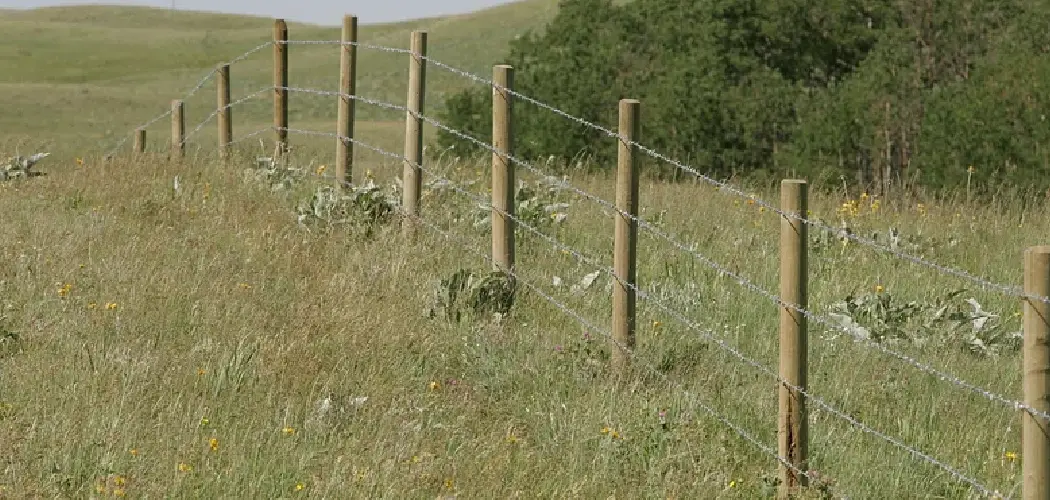Installing a barbed wire fence is not only a cost-effective way to secure your property, but it also acts as a deterrent for unwanted animals and intruders. This type of fencing is commonly used in rural areas or for large properties such as farms or ranches.
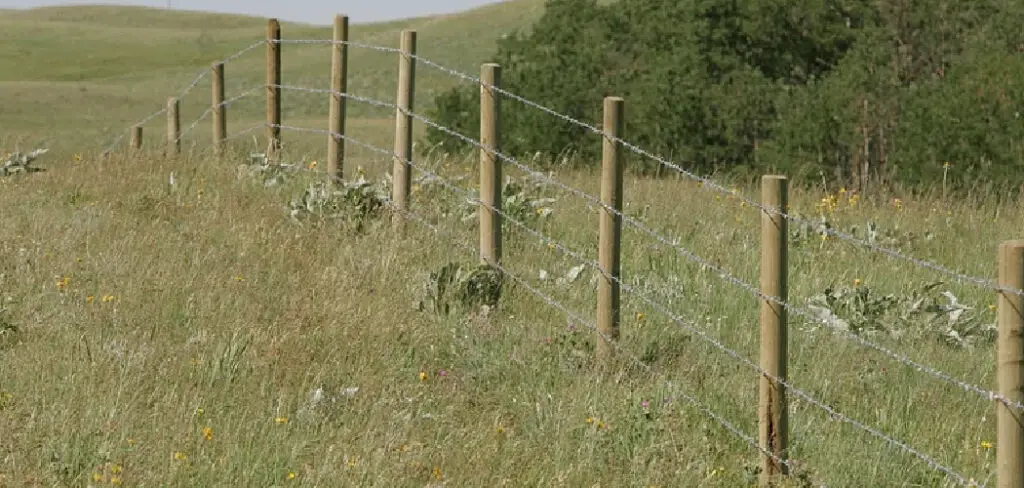
While the installation process may seem daunting at first, with the right tools and materials, it can be easily completed in a weekend. In this guide, we will take you through the step-by-step process of how to install a barbed wire fence and provide some tips and tricks along the way. So, let’s get started.
Tools and Materials You Will Need to Install a Barbed Wire Fence
1. Measuring tape or measuring wheel
2. Wooden stakes or marking paint
3. Post hole digger or auger
4. Level
5. Hammer
6. Nails or screws
7. Tension wire
8. Barbed wire rolls
9. Fence pliers
10. Wire clips or U-nails
11. Wire strainer and strainer handle
Step-by-step Guidelines on How to Install a Barbed Wire Fence:
Step 1: Planning and Preparation
Before you begin the installation process, it’s important to have a clear plan in place. Start by determining the location of your fence and marking it out using wooden stakes or marking paint. Measure the perimeter of your property accurately, as this will determine the number of materials you will need. Planning also involves checking for any underground utilities or potential obstacles that may need to be taken into consideration during the installation process.
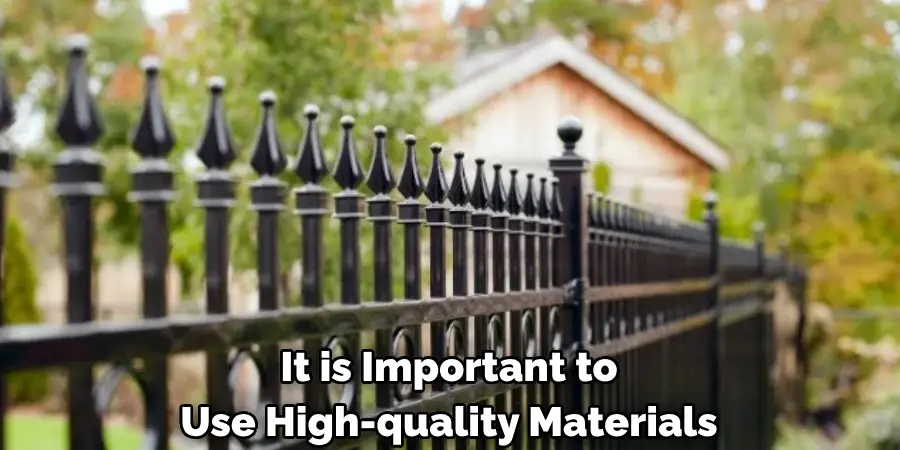
Step 2: Digging Fence Post Holes
Once you have marked out the perimeter, it’s time to dig the fence post holes. The holes should be evenly spaced and deep enough to accommodate one-third of the length of your fence posts. For example, if you are using 6-foot-long posts, the holes should be at least 2 feet deep. Use a post-hole digger or auger to make this task easier. Make sure the holes are straight and evenly spaced apart.
Step 3: Setting Fence Posts
Once the post holes are dug, it’s time to set the fence posts. Start by placing a post in one of the holes and using a level to ensure it is straight. Once you have confirmed that the post is vertical, fill the hole with concrete or tamp down the soil around the post to secure it in place. Repeat this process for each post. This step is crucial, as it provides a strong foundation for your fence.
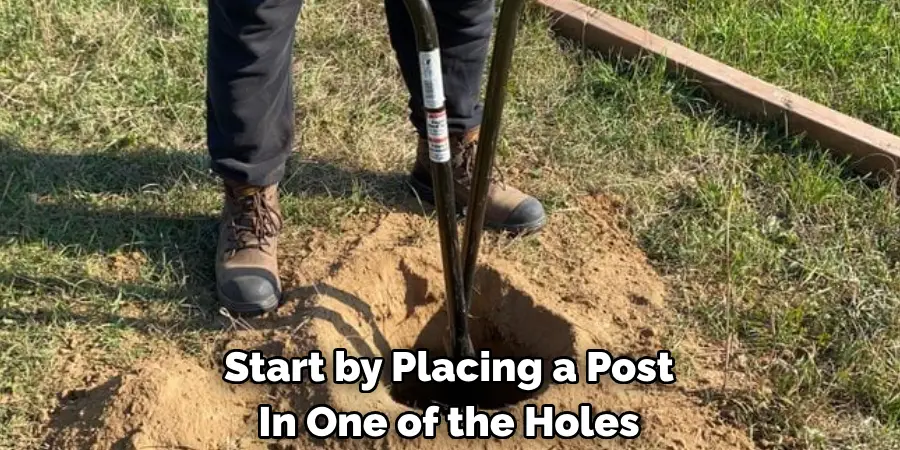
Step 4: Installing Tension Wire
After the posts are set, install tension wire along the top of the posts. This will help provide extra support for the barbed wire and keep it from sagging over time. Use fence pliers to secure the tension wire to each post using wire clips or U-nails. Make sure the wire is pulled tight and evenly spaced. If using multiple rolls of tension wire, overlap them and secure them together with more clips. Make sure to leave an extra foot of tension wire at each end for tightening later.
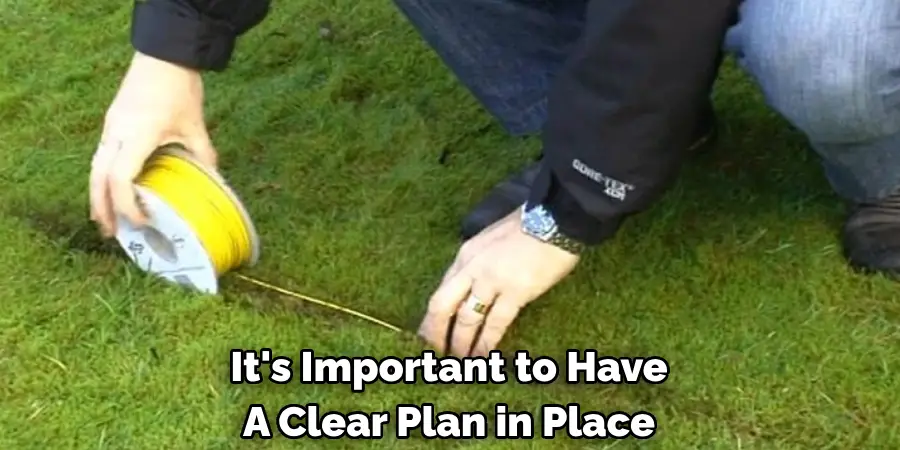
Step 5: Attaching the Barbed Wire
Now it’s time to attach the barbed wire to your fence. Start by unrolling a section of wire and securing one end to an end post using fence pliers. Pull the wire taut towards the next post and wrap it around the post, using fence pliers to secure it in place. Continue this process for each post, ensuring that the wire is pulled tight and securely attached.
Step 6: Adding Additional Strands of Barbed Wire
Depending on your needs, you may decide to add additional strands of barbed wire to your fence. If so, repeat step 5 for each additional strand, making sure they are evenly spaced and pulled tight. It’s recommended to have at least three strands of barbed wire for proper security. Adding more strands can provide extra protection, especially for larger animals.
Step 7: Tightening the Fence
Once all of the barbed wire is installed, it’s time to tighten the fence. Using a wire strainer and strainer handle, pull each strand of wire tight and secure it with a straining knot. This will ensure that your fence remains taut and secure. It’s important to regularly check and tighten your fence over time, as weather and animals can cause it to sag.
Following these steps will result in a secure and strong barbed wire fence. Remember to always wear protective gear, such as gloves and safety glasses, when working with barbed wire. Additionally, it’s important to check local laws and regulations before installing any type of fencing on your property. We hope this guide has helped understand how to install a barbed wire fence. With the right tools and materials, you can have a functional and secure fence in no time. Happy fencing!
Additional Tips and Tricks to Install a Barbed Wire Fence
1. When installing a barbed wire fence, it is important to use high-quality materials that are designed for the purpose. This will ensure the durability and effectiveness of the fence.
2. Before starting the installation process, it is essential to plan and mark out the fence line accurately. This will help avoid any mistakes and make sure the fence is installed in the correct location.
3. When digging holes for fence posts, make sure they are deep enough to provide adequate support for the fence. In general, a depth of at least 2 feet is recommended for barbed wire fences.
4. While installing the fence posts, it is crucial to make sure they are evenly spaced and aligned. Unevenly spaced posts can lead to weak points in the fence, which can compromise its overall strength.
5. To ensure maximum security, install at least three strands of barbed wire on the fence. For added protection, you can consider adding more strands or using taller posts to increase the height of the fence.
6. While attaching the barbed wire to the fence posts, make sure it is pulled taut and secured tightly. Loose barbed wire can pose a danger to both humans and animals.
7. When working with barbed wire, always wear protective gear such as thick gloves and long-sleeved shirts to avoid injury. Barbed wire can cause cuts and scratches, so it is important to take necessary precautions.
8. It is recommended to regularly inspect and maintain the fence for any damages or weak points. This will help ensure the longevity of the fence and prevent any potential breaches.
9. If you live in an area with harsh weather conditions, consider using galvanized barbed wire as it is more resistant to rust and corrosion.
10. Finally, always consult with local authorities and abide by any regulations or restrictions when installing a barbed wire fence in your area.
By following these additional tips and tricks, you can ensure the successful installation of a durable and effective barbed wire fence. Remember to prioritize safety, proper planning, and quality materials for the best results. Happy fencing!
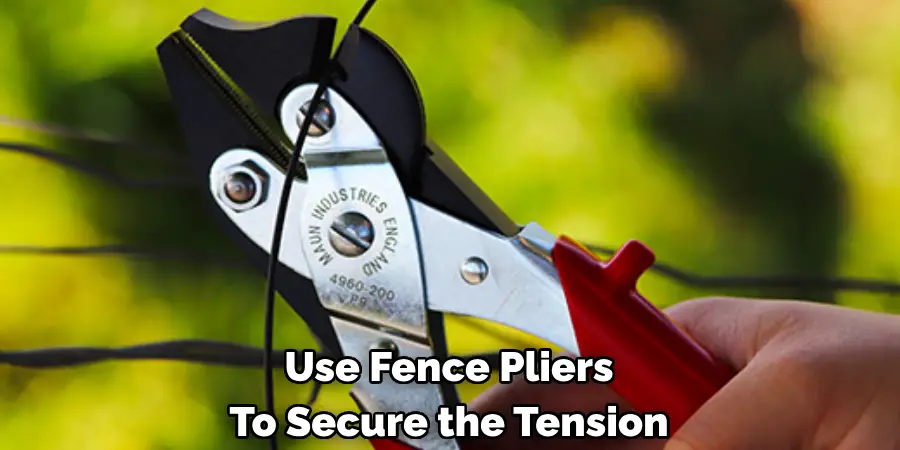
Things You Should Consider to Install a Barbed Wire Fence
1. It’s important to check with local authorities before installing a barbed wire fence. Some areas may have regulations or restrictions on the use of barbed wire, especially in residential areas. Make sure you are following all guidelines to avoid any legal issues.
2. Before purchasing materials, determine the length and layout of your fence. Measure the perimeter of your property and identify any potential obstacles such as trees, rocks, or uneven terrain that may require special planning or additional materials.
3. Choose the right type of barbed wire for your specific needs. Various types such as traditional two-point wire, four-point wire, and concertina wire offer different levels of security and durability. Consult with a professional or do thorough research to decide which type is best for your project.
4. Along with the barbed wire, you will also need sturdy posts and anchors to support the fence. These can be made of wood, metal, or concrete. The type and size of these materials will depend on the height and spacing of your wires.
5. Proper installation is crucial for the effectiveness of a barbed wire fence. Make sure to follow manufacturer instructions carefully and use appropriate tools for the job. It may be helpful to have a second person assist with handling and securing the materials.
6. Safety should always be a top priority when installing a barbed wire fence. Wear protective gear such as gloves, goggles, and sturdy work boots to avoid injury while handling the sharp wires.
7. Consider adding warning signs or markers along your fence line to alert others of its presence. This is especially important if the fence is in a highly visible or accessible area.
8. Regular maintenance is necessary to keep your barbed wire fence in good condition. Inspect it periodically for any damage or wear and make repairs as needed. This includes checking and tightening wires, replacing damaged posts, and removing any debris that may accumulate along the fence line.
9. If using electric fencing in addition to barbed wire, consult with a professional to ensure proper installation and safety precautions are taken. Improperly installed electric fencing can be dangerous for both humans and animals.
10. Consider the potential impact on wildlife when installing a barbed wire fence. If your property is near a wildlife habitat, make sure to take extra precautions such as burying the bottom wires or using additional fencing materials to prevent animals from getting caught or injured.
Following these considerations can help ensure a successful and safe installation of a barbed wire fence. Remember to always follow local laws and regulations, prioritize safety, and properly maintain your fence for optimal effectiveness. With the right planning and materials, a barbed wire fence can provide added security and protection for your property. So, take the necessary steps and precautions when installing one to avoid any potential issues or problems. Keep your property safe and secure with a well-built barbed wire fence. Happy fencing!
Troubleshooting Common Issues to Install a Barbed Wire Fence
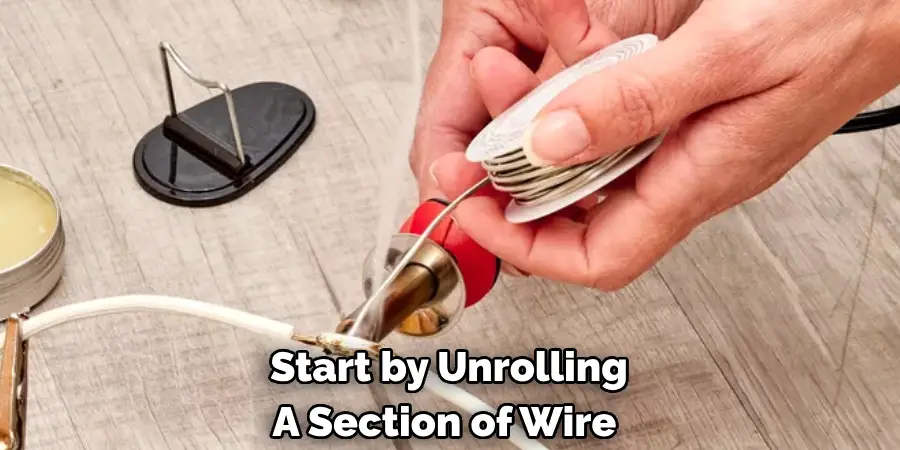
1. Fence Post Not Deep Enough:
One of the most common problems during the installation of a barbed wire fence is if the fence posts are not deep enough in the ground. This can occur if the holes dug for the fence posts are not deep enough or if the posts have not been inserted up to the recommended depth. To avoid this issue, make sure to dig holes that are at least 1/3 of the length of your fence post and insert them into the ground firmly.
2. Fence Wire Not Tensioned Properly:
Another problem that may arise during the installation of a barbed wire fence is if the fence wire is not tensioned properly. This can lead to sagging and loose wires, making your fence ineffective in keeping animals out. To avoid this issue, make sure to use a wire stretcher to pull the wire tight before attaching it to the posts.
3. Uneven Terrain:
Uneven terrain can also cause problems during the installation of a barbed wire fence. If your property has hilly or rocky areas, it may be difficult to properly install the fence posts and wire. In this case, it is important to carefully plan out the location of your fence and make any necessary adjustments to ensure that it is installed correctly.
4. Incorrectly Spaced Fence Posts:
Another common issue is if the fence posts are not spaced evenly. This can lead to an uneven and unstable fence that may easily collapse or become compromised over time. To avoid this problem, make sure to measure and mark the location of each post before digging holes and inserting them into the ground.
5. Inadequate Support for Corner Posts:
Corner posts are an essential part of a barbed wire fence, as they provide support and stability for the entire fence line. If these posts are not properly supported, it can cause the fence to sag or become unstable. To avoid this issue, make sure to use longer and thicker posts for corners and brace them with additional supports.
6. Poorly Installed Gates:
Another potential issue is if the gates are not installed properly. This can lead to difficulty opening and closing them, as well as compromising the overall strength of your fence. To avoid this problem, make sure to carefully follow the manufacturer’s instructions for installing gates and ensure that they are securely attached to sturdy posts.
7. Inadequate Clearance for Gates:
In addition to proper installation, it is also important to make sure that there is adequate clearance for gates to swing open and closed. If there is not enough space between the gate and the surrounding fence or obstacles, it can cause damage and make it difficult to use the gate properly. To avoid this issue, measure and plan for proper clearance before installing your gates.
Following these common troubleshooting tips can help ensure a successful installation of your barbed wire fence. Remember to carefully plan and prepare before starting the installation process, and don’t hesitate to consult a professional if you encounter any difficulties.
With proper care and maintenance, your barbed wire fence will provide security and protection for many years to come. So it is important to regularly check for any issues and make necessary repairs to keep your fence in top condition. By addressing these common issues, you can have a strong and effective barbed wire fence that will serve its purpose for years to come. Happy fencing!
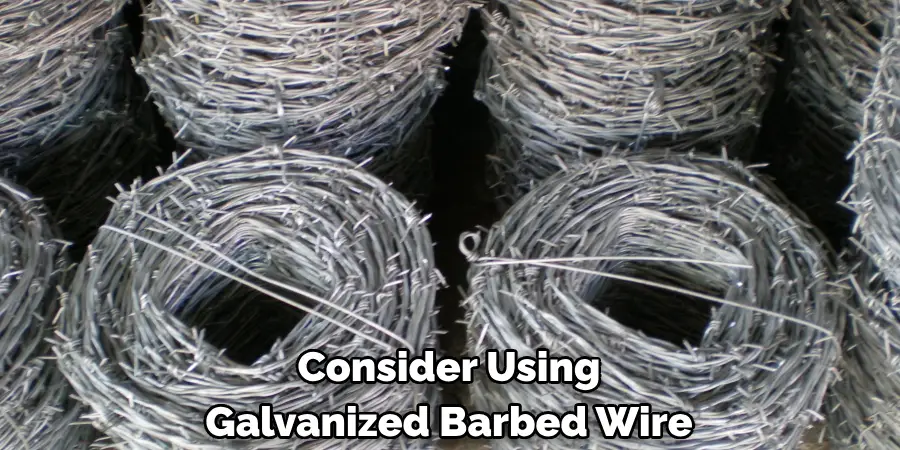
Precautions Need to Be Followed for Installing a Barbed Wire Fence
1. First and foremost, make sure you have all the necessary tools and materials before starting the installation process. This includes barbed wire, fence posts, pliers, staple guns, fencing staples, etc.
2. Determine the area where you want to install the fence and mark out the perimeter using stakes or spray paint.
3. Before digging any holes for the fence posts, check with your local authorities to ensure you are not digging in any restricted areas or over utility lines.
4. Begin by digging holes for the fence posts, making sure they are deep enough to provide proper support for the fence. A general rule of thumb is to dig 1/3 of the total length of the fence post into the ground.
5. Install corner and end posts first, as these will provide the most support for the fence. Make sure they are securely anchored into the ground and use concrete if necessary.
6. Once all the posts are installed, begin stretching out the barbed wire between them, using fencing staples to attach it to each post. Use pliers to tighten the wire and make sure there is no slack.
7. As an added precaution, you may want to install a top wire or an electric wire above the barbed wire for extra security.
8. When installing gates, make sure they are securely attached to the fence posts and have proper locks to prevent unauthorized access.
Following these precautions will ensure that your barbed wire fence is installed safely and effectively, providing security for your property. Additionally, it is important to regularly inspect the fence for any damage or wear and tear and to make necessary repairs as needed. Keep in mind that barbed wire fences can be dangerous if not installed properly, so it is crucial to take all necessary precautions while working with this type of fencing. By following these guidelines and using caution, your barbed wire fence will serve its purpose for years to come.
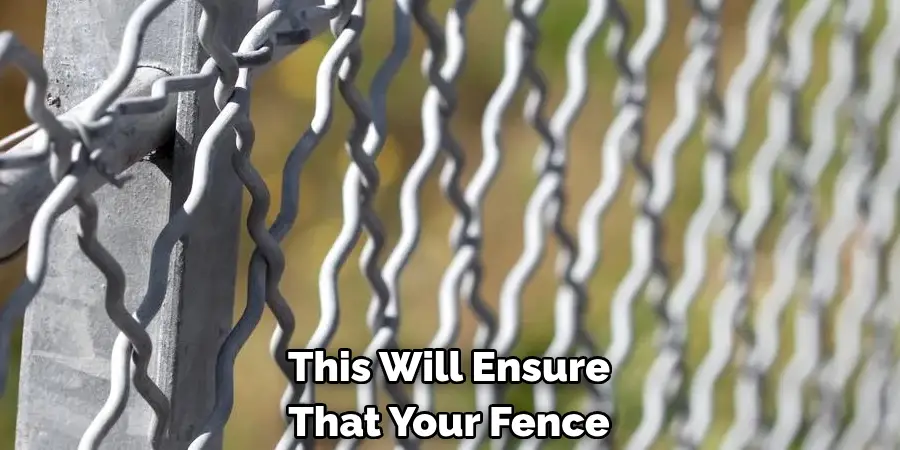
Conclusion
Now you know how to install a barbed wire fence and can get started on your project right away! Remember to always follow safety precautions and consult with professionals when necessary. With the proper tools, materials, and techniques, your barbed wire fence will provide you with security and protection for years to come. Whether it’s for your farm, ranch, or property, a well-built barbed wire fence is an essential investment.
About
Outdoor Fixes is a distinguished figure in the world of Diy design, with a decade of expertise creating innovative and sustainable Diy solutions.
His professional focus lies in merging traditional craftsmanship with modern manufacturing techniques,
fostering designs that are both practical and environmentally conscious. As the author of diy,
outdoorfixes delves into the art and science of outdoorfixes-making, inspiring artisans and industry professionals alike.
Education RMIT University
(Melbourne, Australia) Associate Degree in Design (Outdoor Fixes) Focus on sustainable design, industry-driven projects,
and practical craftsmanship. Gained hands-on experience with traditional and digital manufacturing tools, such as CAD and CNC software.
Nottingham Trent University
(United Kingdom) Bachelor’s in outdoorfixes.com and Product Design (Honors) Specialized in product design with a focus on blending creativity with production
techniques. Participated in industry projects, working with companies like John Lewis and Vitsoe to gain real-world insights.
Publications and Impact
In diy, Outdoor Fixes his insights on indoor design processes, materials, and strategies for efficient production.
His writing bridges the gap between artisan knowledge and modern industry needs, making it a must-read for both budding designers and seasoned professionals.

